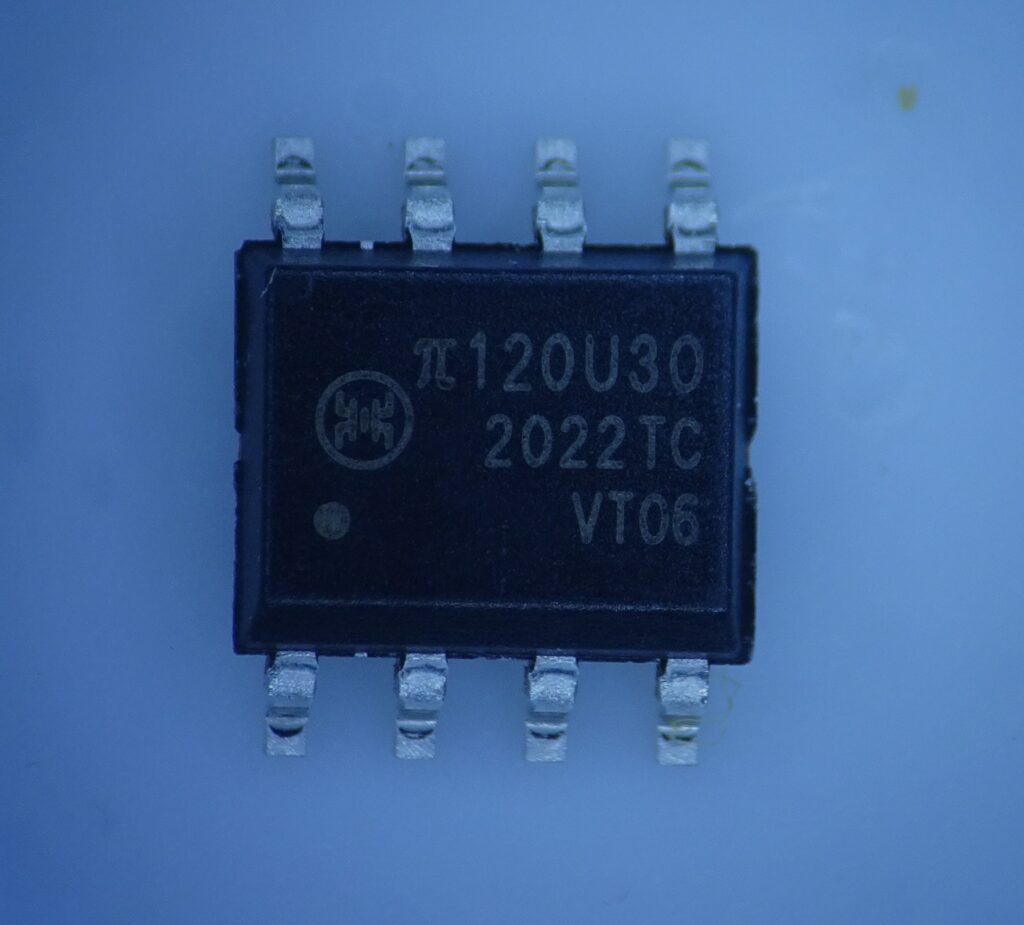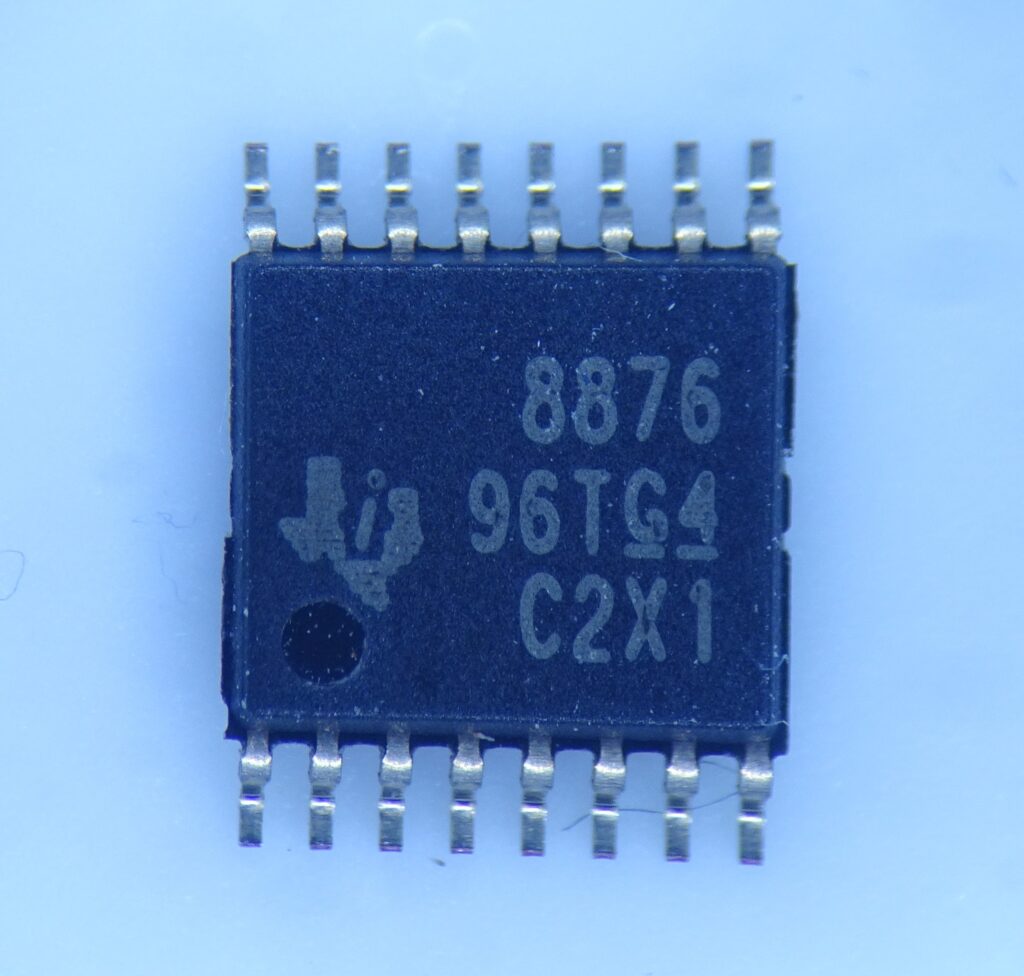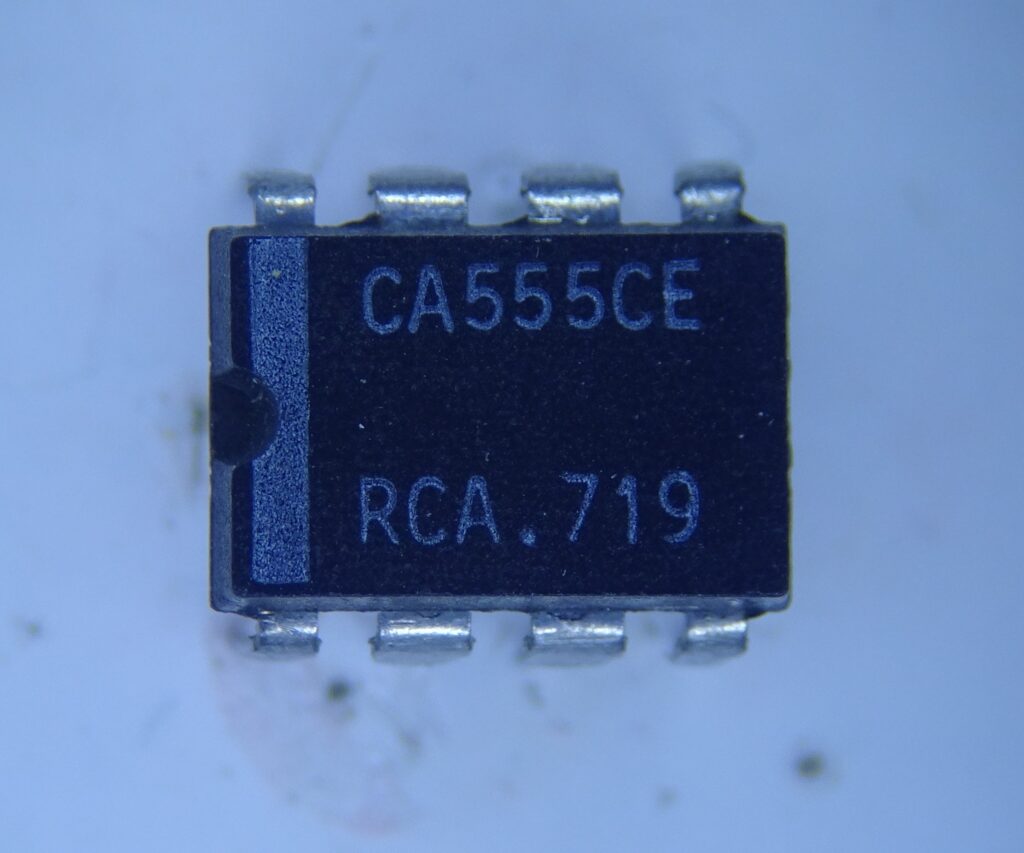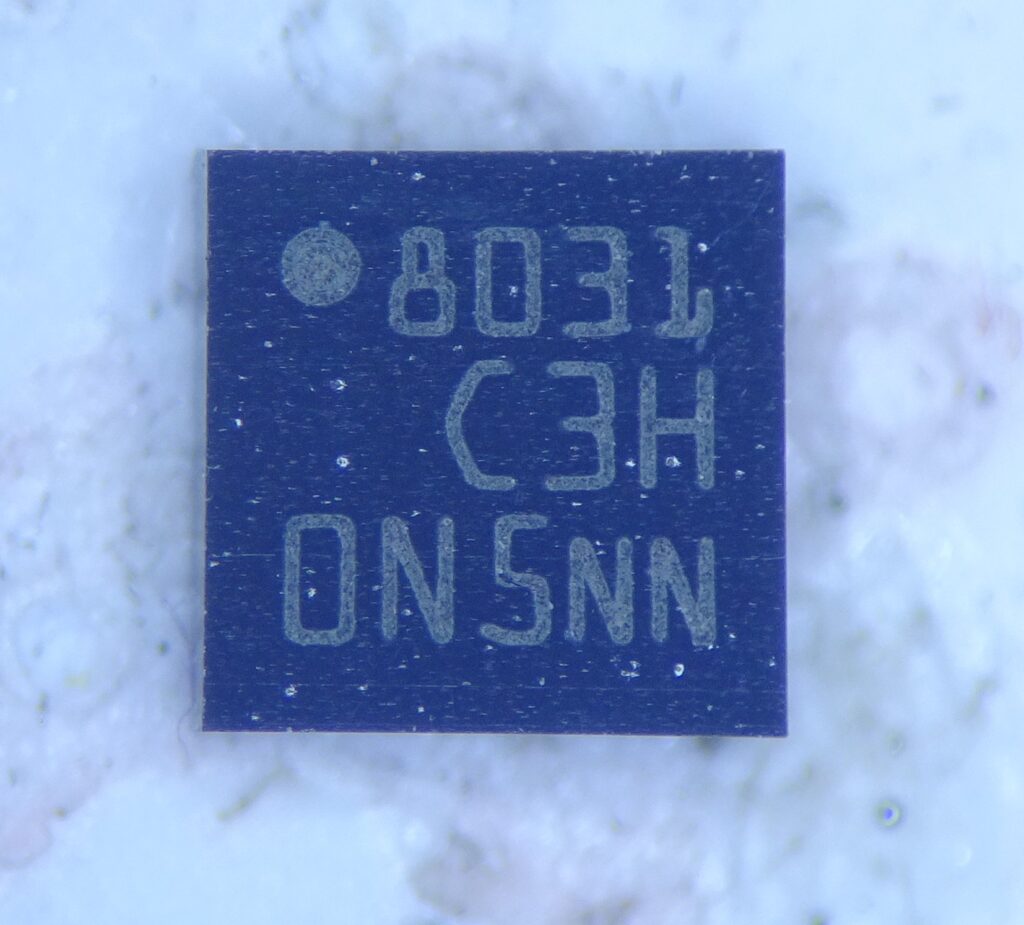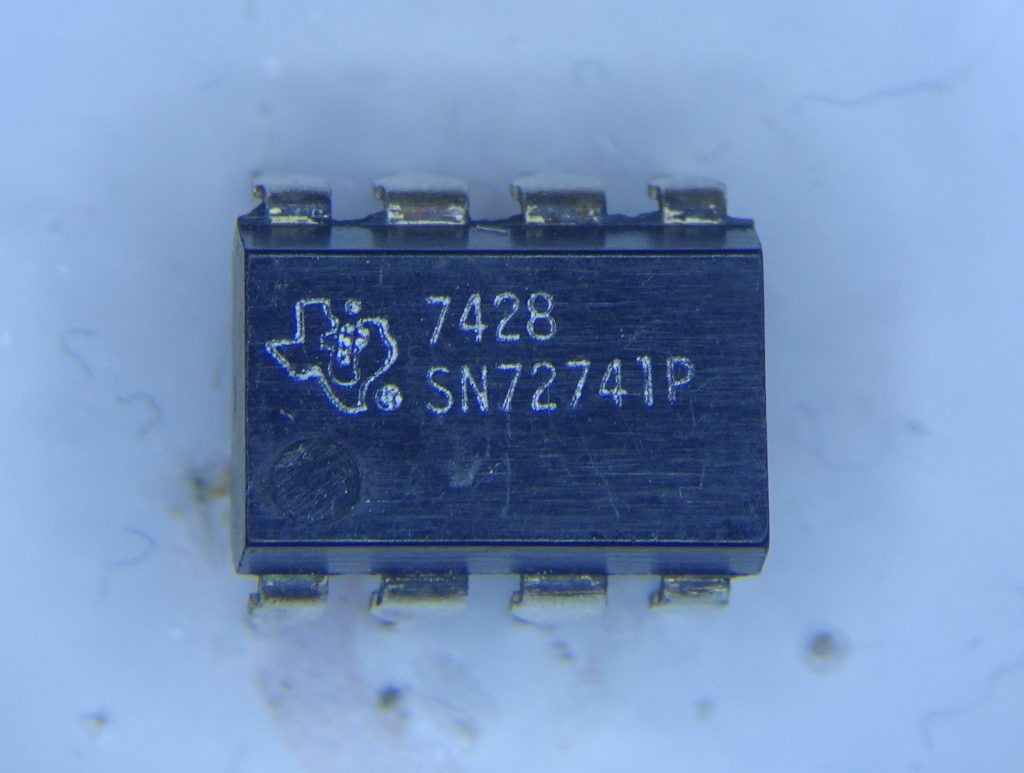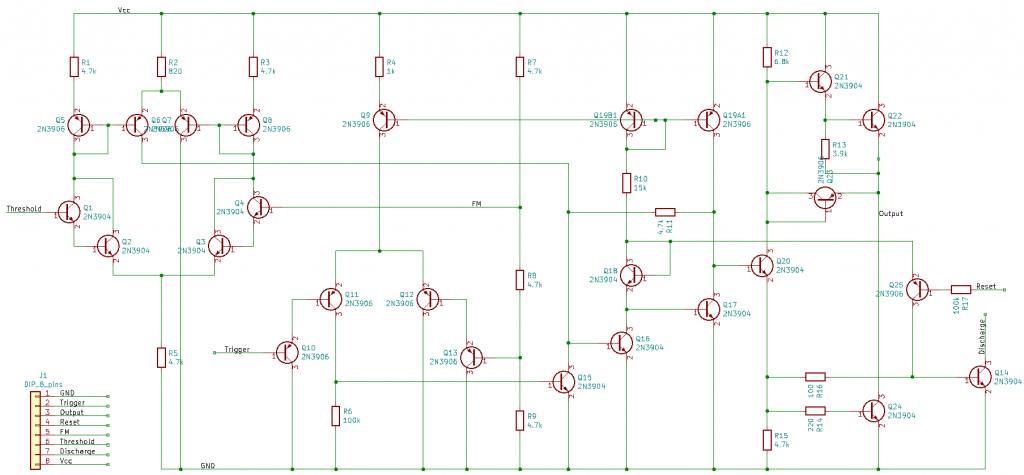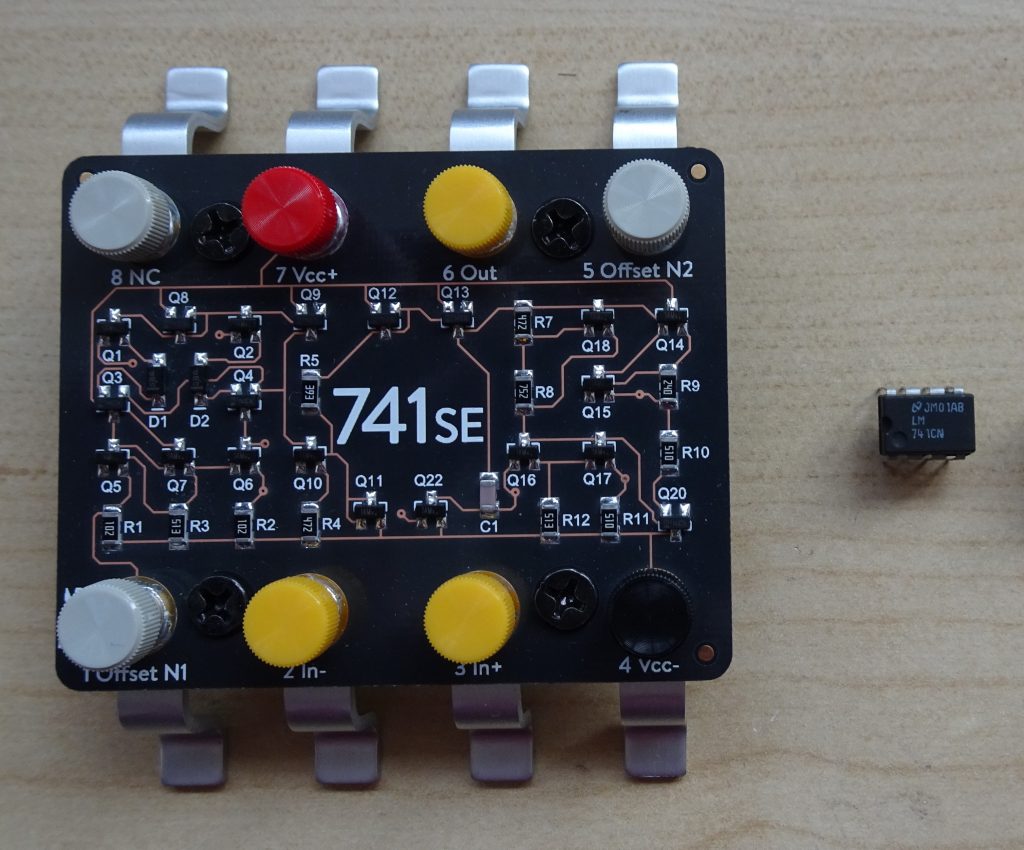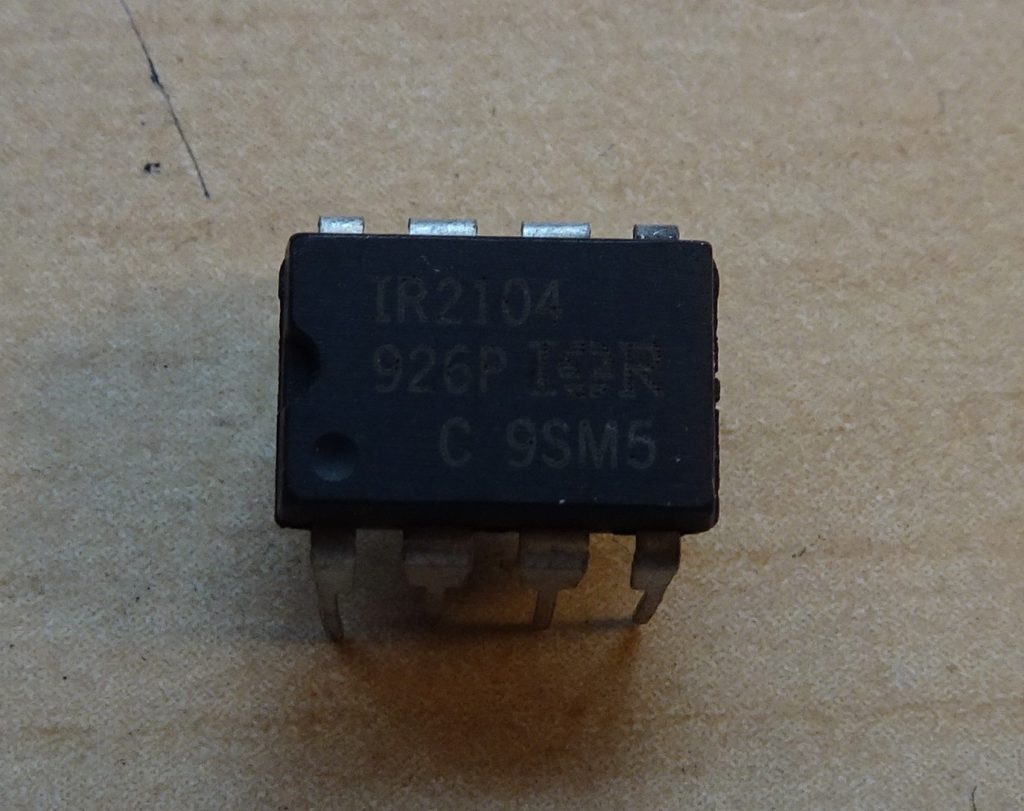LED light bulbs are the most commonly sold type nowadays, especially since incandescent bulbs have been gradually banned from sale starting around 2009. Other low-power types like halogen and compact fluorescent bulbs were also commonly sold until a few years ago, but advances in LED technology, along with a precipitous drop in price, have made LED bulbs the most common type by far.
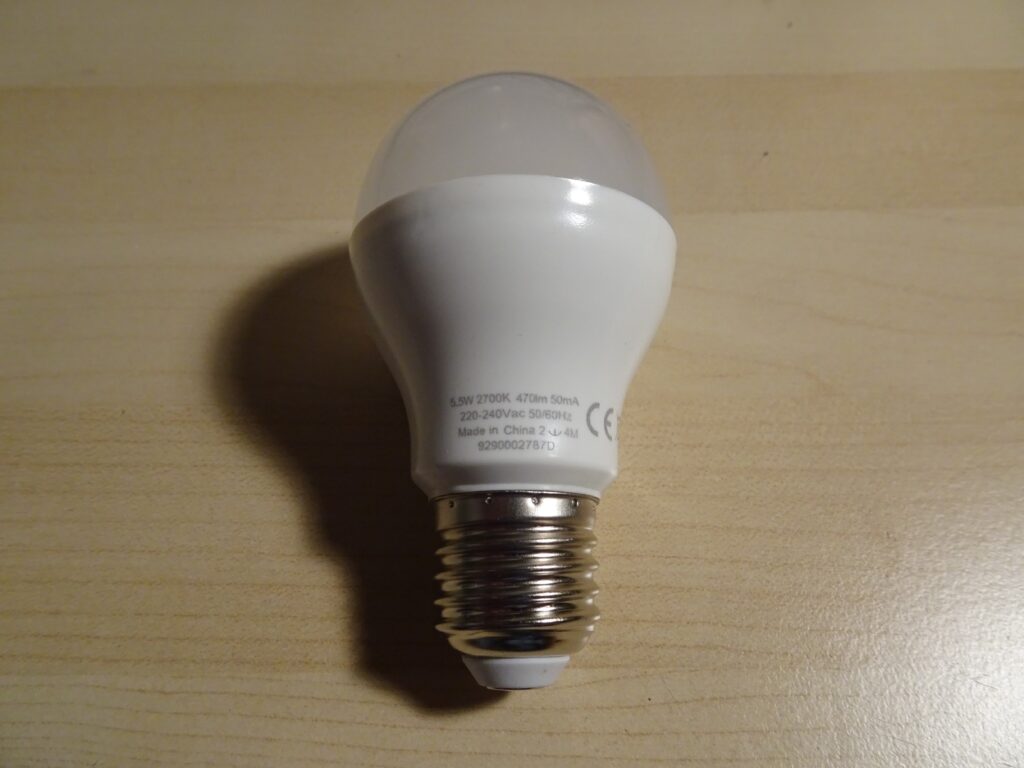
This 5.5 W, 470 lumen bulb had been lighting my home for a couple of years until it burned out a month ago. It was one of the cheapest types sold under the Philips brand; I don’t recall exactly how much I paid for it, but it must have been around eight euros or so. Philips, founded in 1891, is one of the oldest manufacturers of light bulbs, although all lighting products were spun off into a separate company called Signify in 2016.
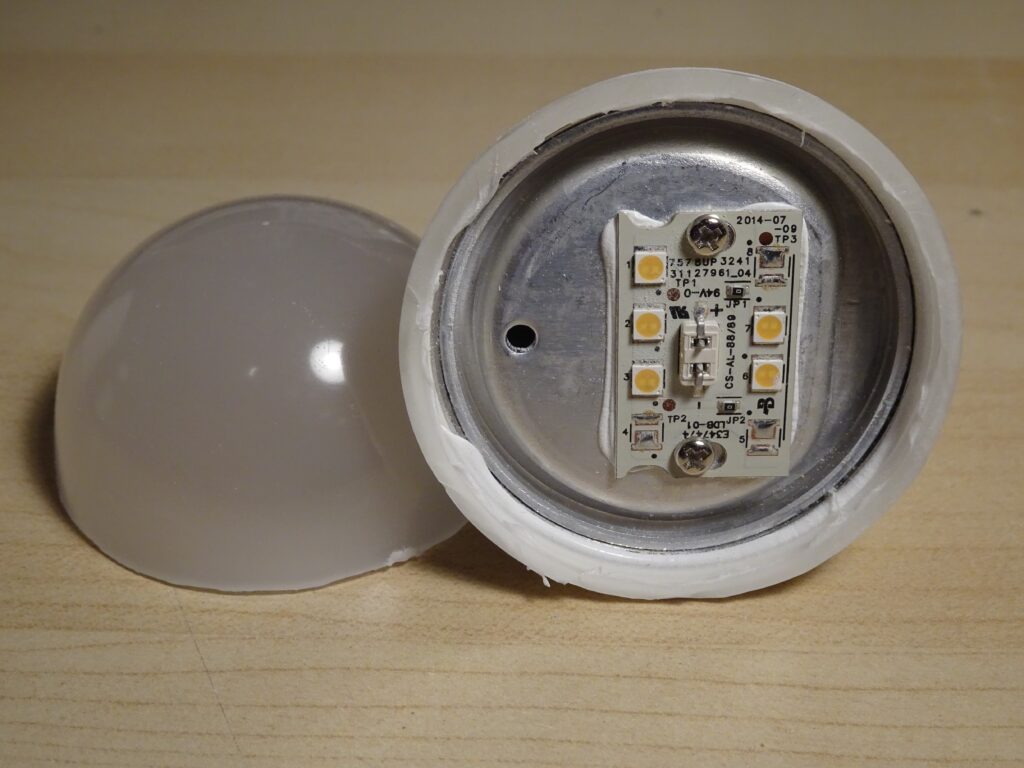
If we cut off the translucent plastic dome, we find a small PCB carrying the LED chips. It’s screwed onto a thick aluminium body that acts as a heat sink. There are five LEDs mounted on the board, but as we can see there’s place for three more. Clearly, the same basic design is also used for a higher wattage version that contains eight LEDs.
All LEDs are connected in series; the three unused ones are bypassed by two zero-ohm resistors (JP1 and JP2). In the middle is a two-pin connector that supplies power from a regulator PCB in the base of the bulb.
Continue reading
